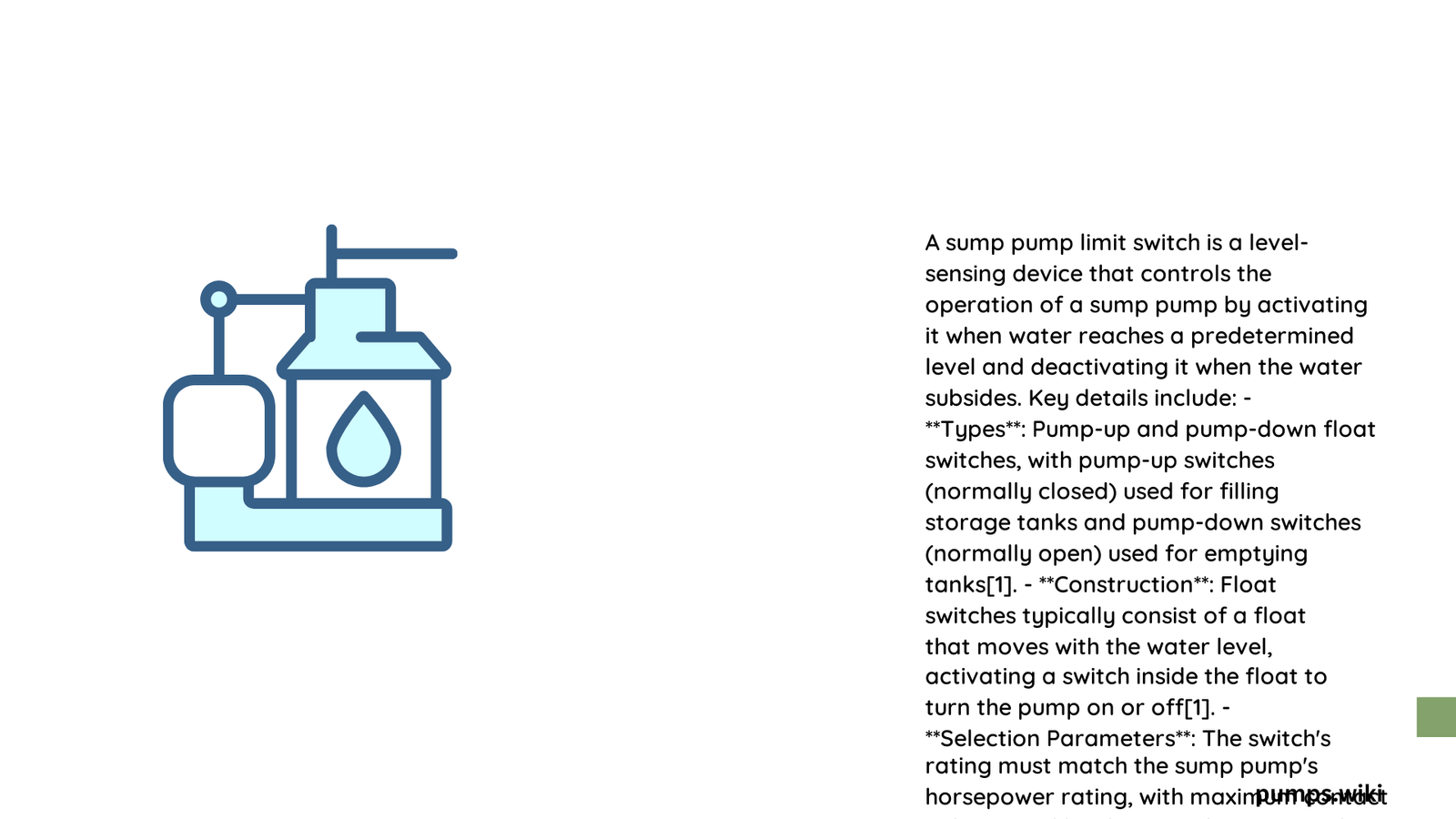A sump pump limit switch is a critical component in basement water management systems, responsible for automatically activating and deactivating the pump based on water levels. This precision electronic device ensures efficient water removal, prevents potential flooding, and protects your home’s foundation by monitoring water accumulation and triggering the pump’s operation at predetermined levels. Understanding its functionality, specifications, and maintenance can significantly enhance your basement’s water protection strategy.
What is a Sump Pump Limit Switch?
A sump pump limit switch, commonly known as a float switch, is an electromechanical device designed to control the activation and deactivation of a sump pump based on water levels in the sump pit. When water rises to a specific height, the switch triggers the pump to start removing water, and when the water level drops, it signals the pump to stop.
How Does a Sump Pump Limit Switch Work?

Operational Mechanism
- The limit switch uses a floating mechanism that rises and falls with water levels
- When water reaches a predetermined height, the switch closes an electrical circuit
- This circuit activates the pump, initiating water removal
- As water levels decrease, the switch opens the circuit, stopping the pump
What Are the Key Components of a Sump Pump Limit Switch?
| Component | Function | Typical Specifications |
|---|---|---|
| Float Mechanism | Detects water level | Adjustable range: 1-48 inches |
| Electrical Contacts | Triggers pump activation | 115V-230V rating |
| Mounting Bracket | Secures switch in sump pit | Corrosion-resistant materials |
What Factors Influence Sump Pump Limit Switch Performance?
Critical Performance Factors
- Voltage Compatibility
- Must match pump’s electrical requirements
- Typical ratings: 115V and 230V
-
Current handling capacity: 13-15 amps
-
Water Level Range
- Adjustable activation points
- Typical range: 2-8 inches
-
Depends on specific model and manufacturer
-
Environmental Durability
- Resistance to corrosion
- Waterproof design
- Material quality
What Are the Different Types of Sump Pump Limit Switches?
Switch Varieties
- Tethered Float Switch
- Flexible positioning
- Suitable for deeper sump pits
-
More prone to tangling
-
Vertical Float Switch
- Compact design
- Less movement
-
Ideal for standard pit depths
-
Diaphragm Float Switch
- Pressure-sensitive
- High reliability
- Complex installation
How to Select the Right Sump Pump Limit Switch?
Selection Criteria
- Check pump’s voltage requirements
- Measure sump pit dimensions
- Consider water table fluctuations
- Evaluate environmental conditions
- Review manufacturer specifications
What Are Common Troubleshooting Techniques?
Diagnostic Steps
- Inspect physical damage
- Test electrical continuity
- Check wire connections
- Verify float movement
- Assess switch responsiveness
Maintenance Best Practices
Proactive Care
- Annual switch inspection
- Clean float mechanism
- Check wire integrity
- Lubricate moving parts
- Replace every 5-7 years
Installation Recommendations
Professional Tips
- Disconnect power before installation
- Use appropriate wire gauge
- Secure mounting
- Test switch functionality
- Follow manufacturer guidelines
Cost Considerations
Price Range
- Basic models: $15-$30
- Advanced switches: $50-$100
- Professional installation: $100-$250
Potential Failure Indicators
Warning Signs
- Inconsistent pump activation
- Frequent cycling
- Unusual noise
- Water accumulation
- Visible switch damage
Expert Recommendations
Professional Insights
- Always prioritize quality over cost
- Choose switches from reputable manufacturers
- Consider warranty coverage
- Perform regular maintenance
Conclusion
Understanding sump pump limit switches is crucial for effective basement water management. By selecting the right switch, maintaining it properly, and recognizing potential issues, homeowners can protect their property from water damage.
Reference:
– Tameson Float Switch Guide
– Pentair Sump Pump Documentation
– Little Giant Pump Specifications
